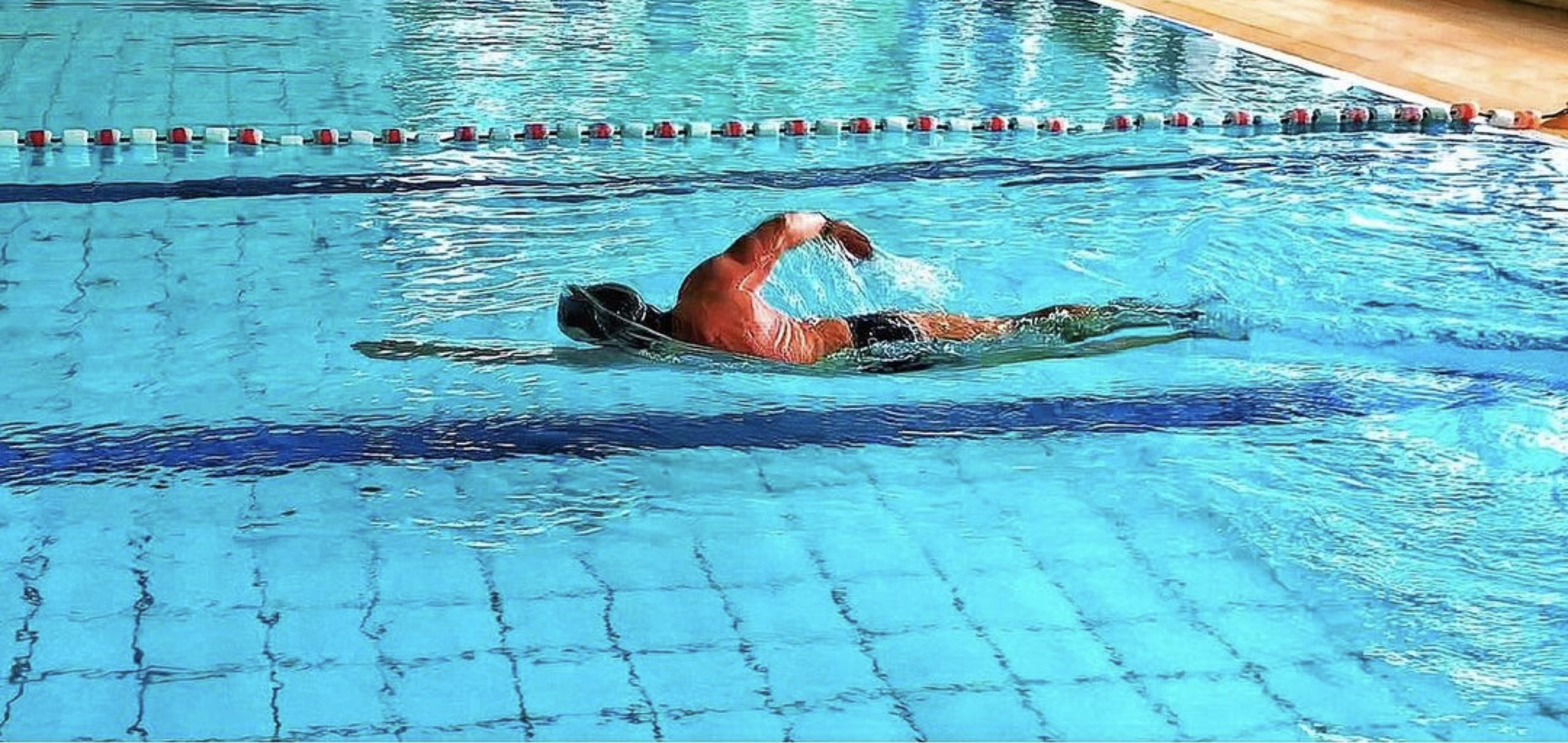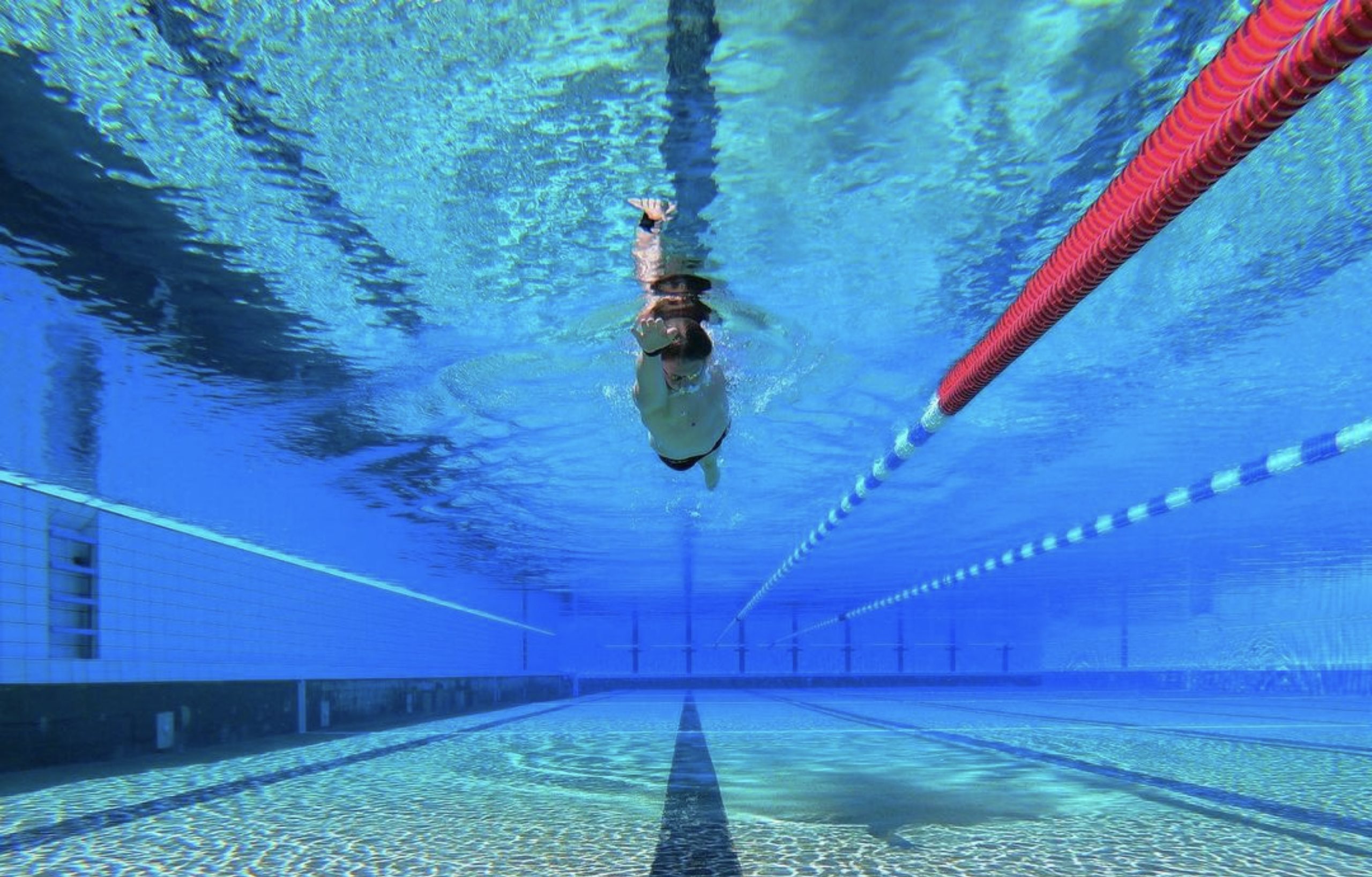5 Tips to Swim Faster from Markus Marthaler
Former professional swimmer turned age group triathlete Markus Marthaler shares tips on how to get to the next level with your swim.

Excellence in sports is a celebration of mundanity, just ask Daniel F.Chambliss. Becoming exceptional is a byproduct of repetitive mundane efforts over time to create the right adaptations. Great swimmers are not born, they are made one stroke at a time.
We sat down with former professional swimmer and European Championship competitor Markus Marthaler, to discuss where the line is drawn between a good swimmer and a great one (Check out his feature story for more). It comes down to learning proper swim technique and honing that form through time and commitment in the water.
AG: As an elite swimmer in a field of amateurs, you must observe quite a few areas for improvement. What are some of the main missteps you see athletes making in the pool?
MM: I’ve seen many swimmers try to self teach themselves or learn from videos online. While this is helpful, it is important to get instruction and observation from a coach to help you understand the mechanics.
Swimming is a very technical sport. You can be as sporty and as fit as you want, but if you have not developed proper form, you can’t just suit up and start training.
Not only is proper form important for performance, but it also prevents injury. Just think about how many times you will move your arms in the same motion during a single training session. If you are repeatedly doing it incorrectly, it can lead to shoulder problems and pain.
It is not possible to improve without focusing on technique; online videos are not enough to cover off on all of the technical elements.
Swimming is a very individual sport and every person has their own unique technique that is a byproduct of their physical make up. There are general elements which can be applied across the board, but the deeper you dive into optimizing your technique, the more individual it gets. A good coach can assess these characteristics and help guide you.
AG: Are there areas that you feel are under emphasized or under practiced?
MM: In my opinion it all starts with kicking. A strong and consistent kick is stabilizing and allows the swimmer to maintain a proper and a neutral head position. Start with a strong six beat kick and work towards a controlled two beat kick, coupled with an efficient stroke technique. Remember, good form combined with a strong kick will preserve energy and make you a more efficient swimmer.

AG: Are there any training cycles or dry land activities that athletes should be incorporating into their training?
MM: Focus on a build-up phase, training/VO2 max phase and tapering phase, all designed with proper intervals.
Build-up phase: longer intervals, slower speed, shorter breaks; power at 65%
Eg. Average distance in one training would be around 6-8km, sample interval set would be 20x100m, go every one minute 30 seconds
Training/VO2 max phase: shorter intervals, faster speed, longer breaks; power at 80-95%
Eg. Average distance in one training would be around 4-5km, sample interval set would be 15x100m, go every two minutes
Tapering phase: sprints, short intervals and technical drills
Eg. Average distance in one training would be around 2.5-3.5km, sample interval set would be 8x50m, go every one minute 30 seconds
Within each training block, athletes can dedicate 40 percent to the buildup phase, 40 percent to the training phase and 20 percent to the tapering phase.
Drills are incredibly important to preserve form and prevent injury.
As I mentioned earlier, kicking is by far the most important thing for swimmers to practice. Every kick transfers energy from the core through the hips to the legs. It’s the foundation to good form and the building block to proper technique.
Here is what you can do to strengthen your kick and hone technique.
Start by holding a board out in front. Your body position should be flat in the water, head in neutral position. Hold the board with both hands and practice strong kicks.
Progress by holding the board with one hand and adding an arm stroke with the other. Switch arms. Then lose the board and add in the catch-up drill (wait for one arm stroke to finish before starting the next stroke).
On dry land there are also drills that can help you develop different phases of your swim stroke. Imitation drills can be done using an exercise band and a bench. Here you would wrap the band around a fixed object in front of the bench. Position yourself face down on the bench. While holding each end of the band, perform the slow and controlled movements of your freestyle swim stroke.
Add drills to every swim session; they should kick off each swim workout.

AG: Assuming the athlete has a firm grasp on the basics, what areas should they dig into next?
MM: Intervals are critical to improving your swim.
A brief story: the other day I was talking with a fellow swimmer at the pool before the start of our workout. She was a three time Ironman finisher and making a push to qualify for Kona. She was complaining about how swim training was boring and her least favorite discipline. When I dug deeper into her training she told me that she had just been doing continuous laps at the same pace across the entire workout. No intervals, no drills. I asked her how she trains for the bike and run. She told me that she would do intervals, change routes and mix up workouts to make it more interesting.
If you go to the pool three times a week and swim 2km without stopping you’ll see improvement over time. But at some point you will plateau. This is because the human body will start to optimize its efforts because it is naturally seeking the easiest way to complete a task.
Adding intervals helps to continuously push your body to create more adaptations and prevent it from optimizing. The result is a proper training-effect and improvements in your performance and speed. And it is also more fun!
AG: Anything else our triathletes should keep in mind?
MM: Do not take the swim for granted. Just because it is the shortest leg of the three disciplines, doesn’t mean it can be neglected. It will do you no good to be a strong cyclist or runner if you have blown all of your energy on the swim. A strong, efficient swimmer knows how to swim fast while preserving energy.

